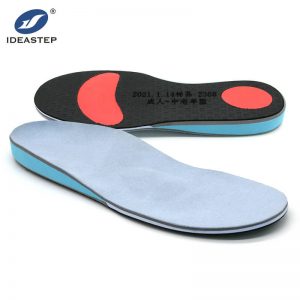IMPROVE SENIOR MOBILITY WITH THE RIGHT ORTHOTICS
Our mobility declines as we age due to a variety of circumstances. Changes in posture and gait, as well as weariness and general weakness when doing daily duties, are some of the first noticeable indications of aging. When people engage in activities like walking, they may experience a reduction in mobility. Aging affects muscle mass and strength, as well as bone density and cartilage thickness, which can make joints stiffer and less flexible1 (Nestle Health Science).
Why Is Senior Mobility Important?
One of the most prevalent age-related problems is immobility. According to a survey based on 2008-2012 U.S. Census data, two out of every three Americans aged 65 and up have difficulty walking and/or climbing. The inability to walk, climb, or move at all brings with it a slew of major problems, including:
Depression
Isolation
Injuries caused by falls
Inability to reach a phone or a door to seek assistance or help
The financial expense of having a loved one who is unable to move can soon add up. Medical devices such as motorized scooters and lifts, supported living, security monitoring, transportation, and medical expenditures from falls-related accidents can add to the burden on the older person and their family. As a result, it’s critical to address mobility difficulties as soon as feasible. What begins as “a little difficulties getting up” quickly escalates into a more serious problem that necessitates the use of special mobility aids such as:
Cane for Walking
Walker
Wheelchair
Powered Wheelchair / Scooter
Always put on the proper footwear.
As we age, foot health becomes increasingly crucial for mobility and independence, and using the correct orthotics can help us stay more active and self-reliant. Wearing the right shoes can help improve balance, particularly in elderly persons who may have mobility and balance concerns. This is a guideline that applies 24 hours a day, seven days a week, whether you’re out running errands or at home making dinner. The appropriate footwear can strengthen and support your foot and arch, improving your overall balance and mobility.

Always squeeze on both sides of the heel area when choosing a shoe to increase balance to ensure the heel is rigid and won’t collapse. Also, bend the shoe to see if the toes are flexible. The toe box portion of the shoe shouldn’t bend too much, but it also shouldn’t be excessively stiff and rigid. Finally, make sure it doesn’t twist in the middle by doing the twist test.
Foot size might alter as a result of natural aging and health changes, so it’s critical to get your feet professionally measured every time you buy shoes. Late in the day, measure both feet and shop for the larger foot. Another helpful advice is to bring the socks you want to wear and try them on in the shoes before you buy them.
Right away, shoes should feel comfy and supportive. If they don’t, breaking them in isn’t going to help. Orthotic inserts can often be used in conjunction with shoes to provide additional support and movement to the foot, as well as additional comfort that the shoe may lack. Muscle weakness, fallen arches, ataxia, gait abnormalities, joint instability, trouble walking, peripheral neuropathy, limb discomfort, arthropathy, and hemiplegia are all signs that foot orthotics are needed for balance. For these issues, using a suitable supportive orthotic insert can help seniors lower their risk of falling and improve their mobility (Podiatry Today).
Additional Mobility Enhancement Techniques for the Elderly
Following are a few more techniques to avoid immobility now that you’re aware of the importance of mobility concerns and how orthotics might help solve those issues.
Exercise and Stay Active: The best defense is a solid offense; this holds true for a variety of situations, including improved mobility. It will be more difficult to stay mobile as your life gets more sedentary.
Regularly using the stairwell
For a quick stroll, park further away from your location.
Instead of driving, go to neighboring shops or neighbors’ houses.
Only under the supervision of a doctor or physical therapist should you use a medical transport device (e.g., a scooter or a wheelchair).
Maintain a Healthy Weight: Having strong legs is essential for mobility. Obesity, for example, can make your legs weak to the point of paralysis. As a result, maintaining a healthy weight is critical for retaining mobility as you become older.
Stretching should be done on a regular basis by people of all ages for improved body function, reduced discomfort, increased blood flow, and increased mobility. Stretching is the most straightforward approach to enhance mobility in the elderly.
Now is the time to ensure that improving your mobility is made easier with correct arch support, which you can do with SelectFlex Arch Control Insoles for your feet. With every stride you take, you’ll have ideal support, MOBILITY, and comfort. You can lower your chance of serious slips, trips, and falls by taking appropriate care of your feet on a regular basis. Take charge of your foot care right now! Learn more about the unique Arch-Control Insole.
